Go/No-Go
Utilize Buildr's Go/No-Go Feature on Leads and Projects
Buildr's Go/No-Go tool enables your team to decide whether or not a lead or project is worth spending your time and resources on. Through a series of questions created by your team, you can quickly decide whether to move forward or pass on a potential lead or project. The Go/No-Go process will help your team answer the following questions:
- Lead Go/No-Go: Should we spend our precon resources on pursuing this project?
- Project Go/No-Go: Should we commit to building this project?
When properly implemented, the Go/No-Go process helps ensure that you invest your resources wisely, mitigate risks, and align with the interests of stakeholders at your company.
Enable Go/No-Go
To get started, navigate to the account settings & select the Go/No-Go tab. Here, you can enable Go/No-Go on Projects and Leads.
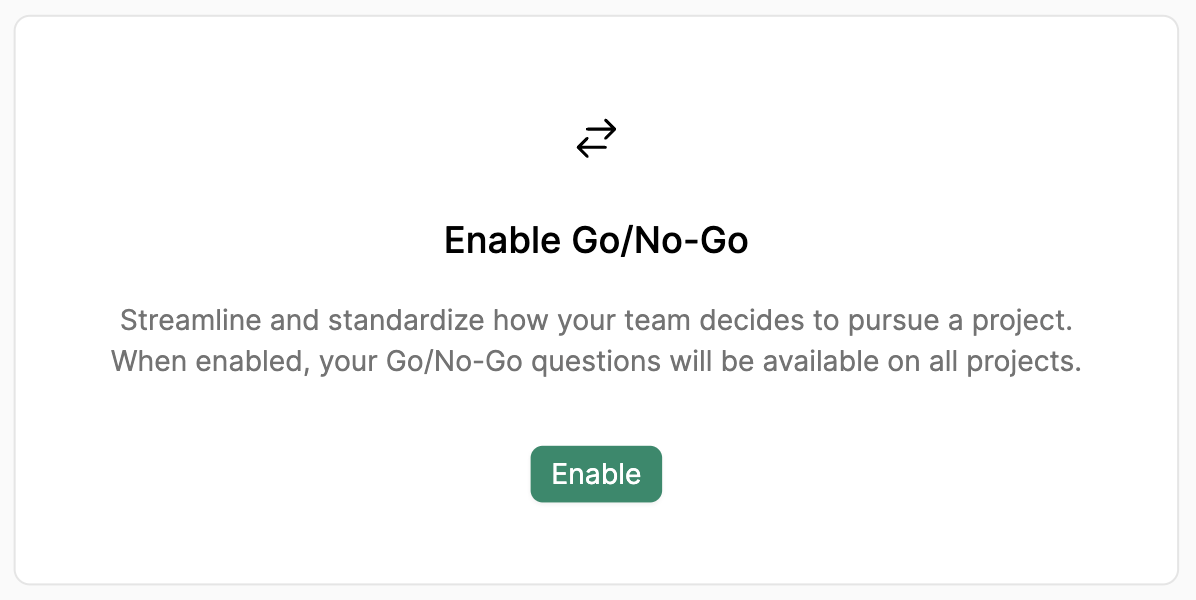
Once enabled, you will see a list of default questions. You can add or modify your go/no go questions to best suit your process.
Note: Only admin users can enable the Go/No-Go feature and customize questions. Once enabled, all users will have the ability to utilize the tool on all leads and projects.
Customize your Go/No-Go Questions
To edit existing questions, simply click the pencil icon to make your edits.
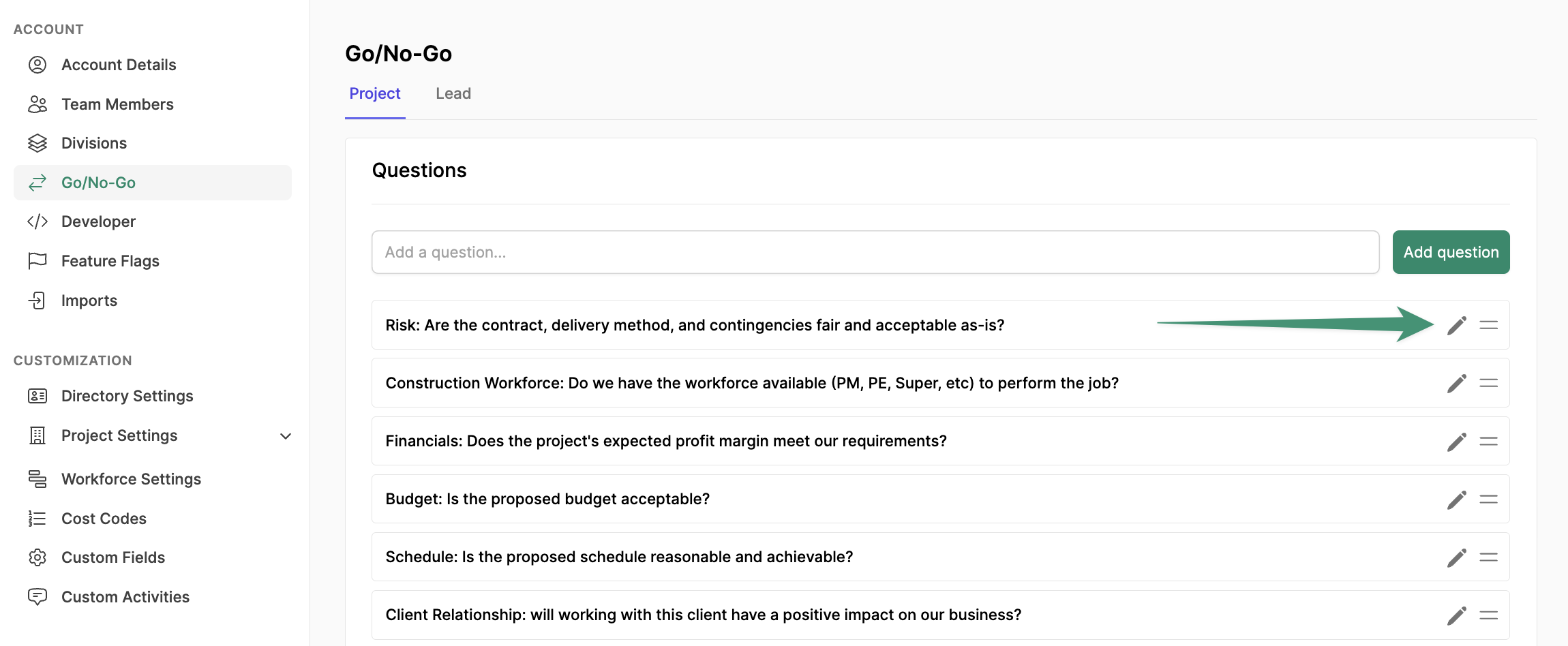
To add new questions, type your question into the text box and click "Add question".
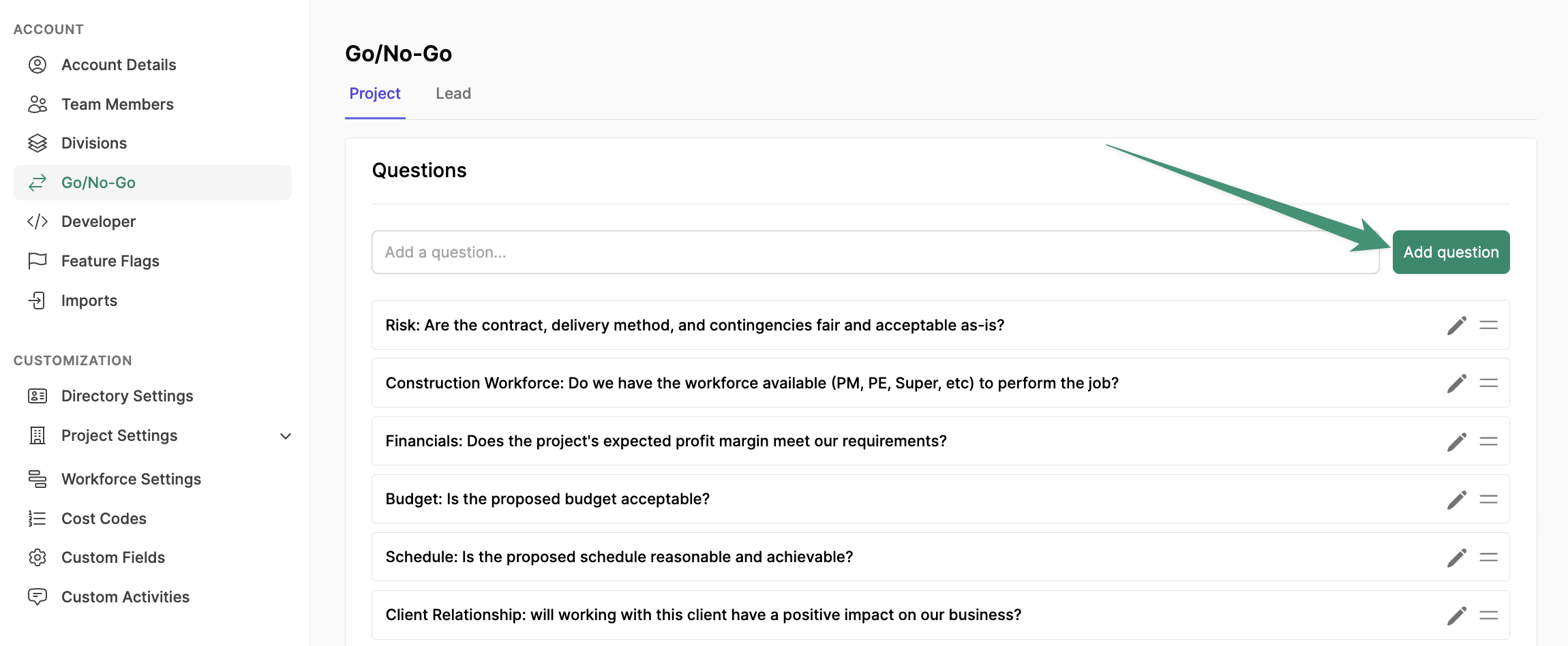
When your Go/No-Go questions are customized to your team's process, click "Publish". Once published, your Go/No-Go questions will be available on all leads and projects.
Using Go/No-Go on Leads
Navigate to a specific lead and select the Go/No-Go tab. Click "Get Started" to begin the Go/No-Go process.
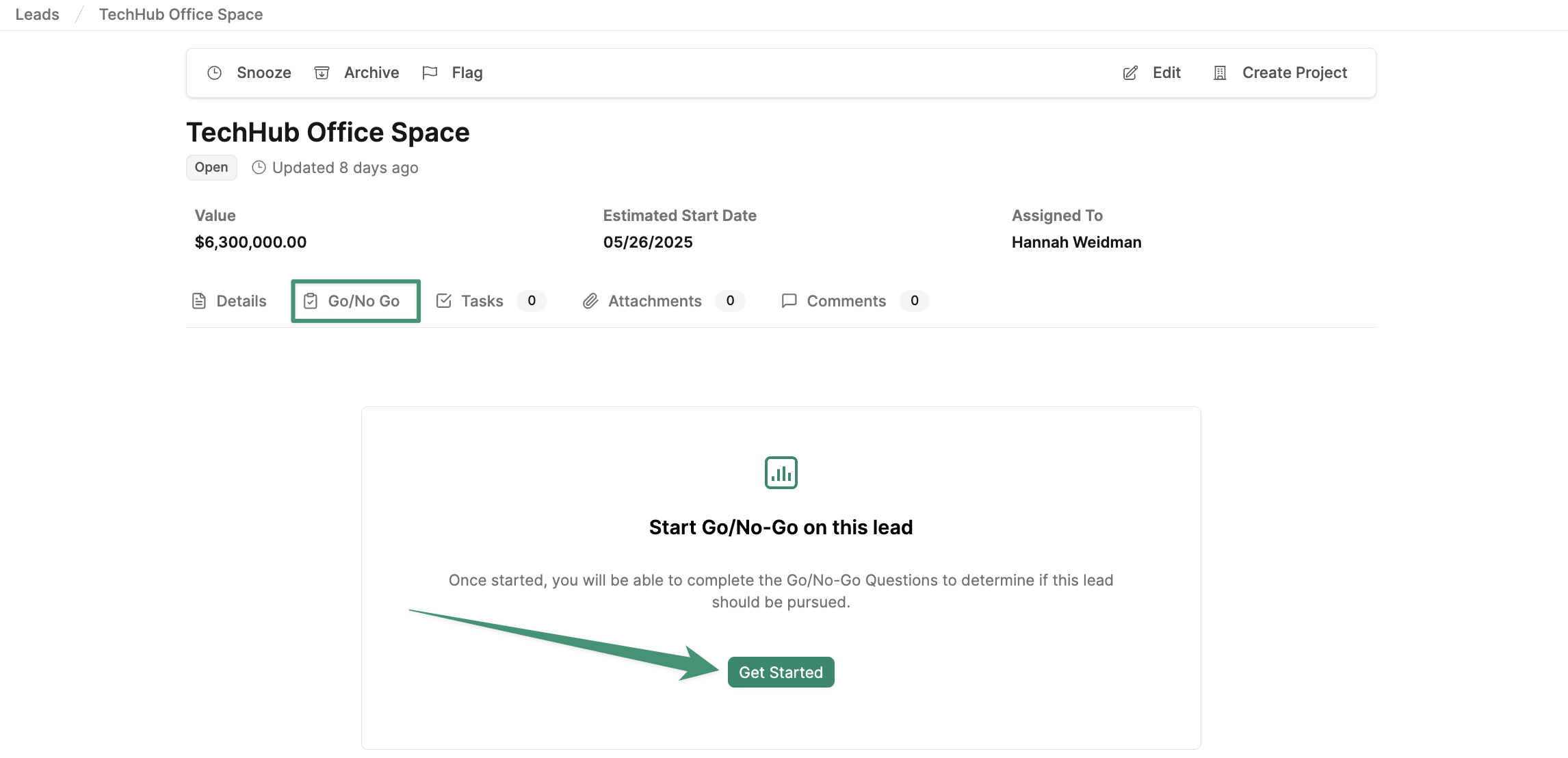
Complete the questionnaire. Once all questions are answered, you will receive a Go/No-Go score at the top of the survey. Buildr recommends establishing Go/No-Go goals within your company before referencing the score given.
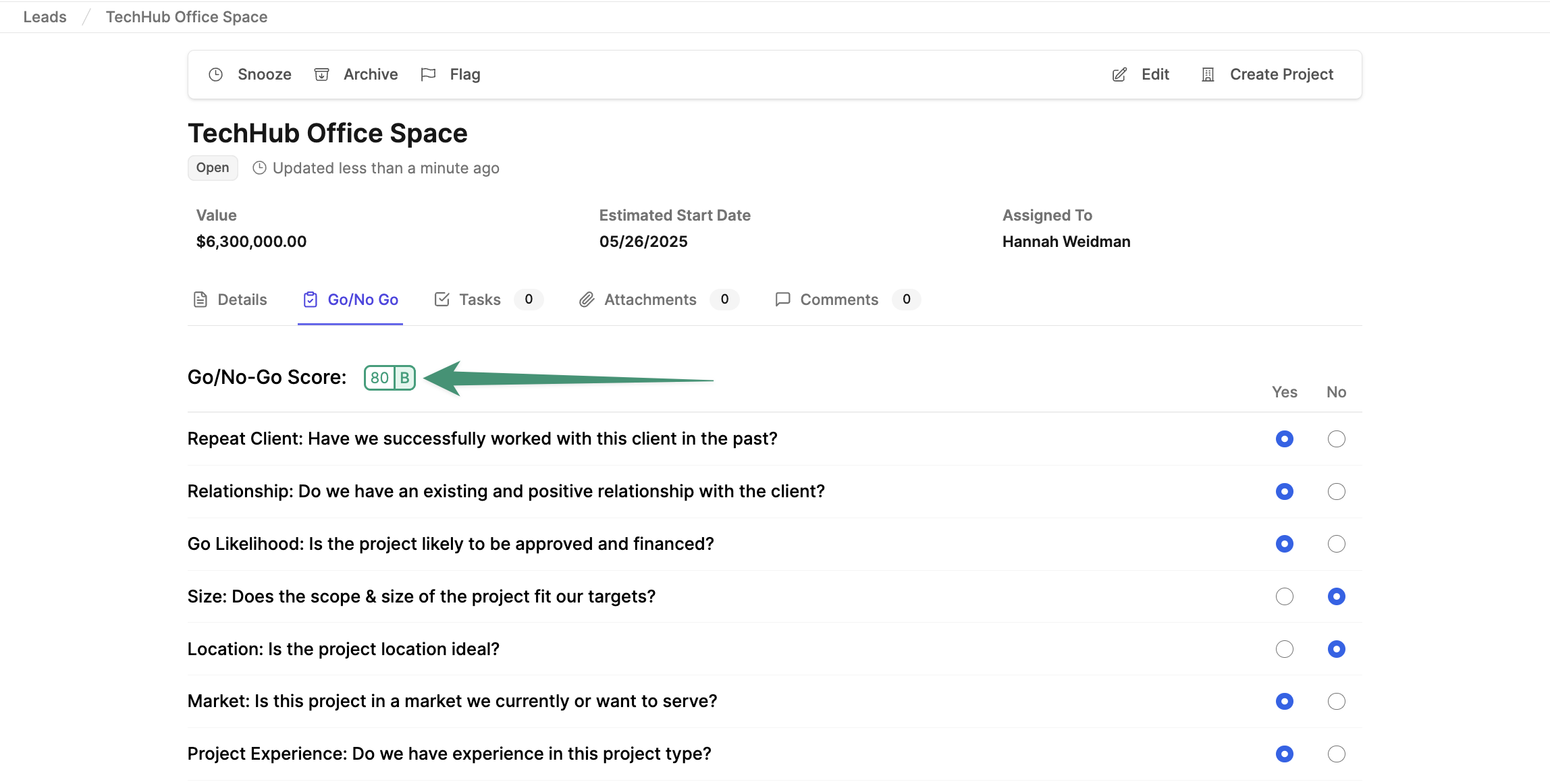
Using Go/No-Go on Projects
Navigate to a specific project and select the Go/No-Go tab. Click "Get Started" to begin the Go/No-Go process.
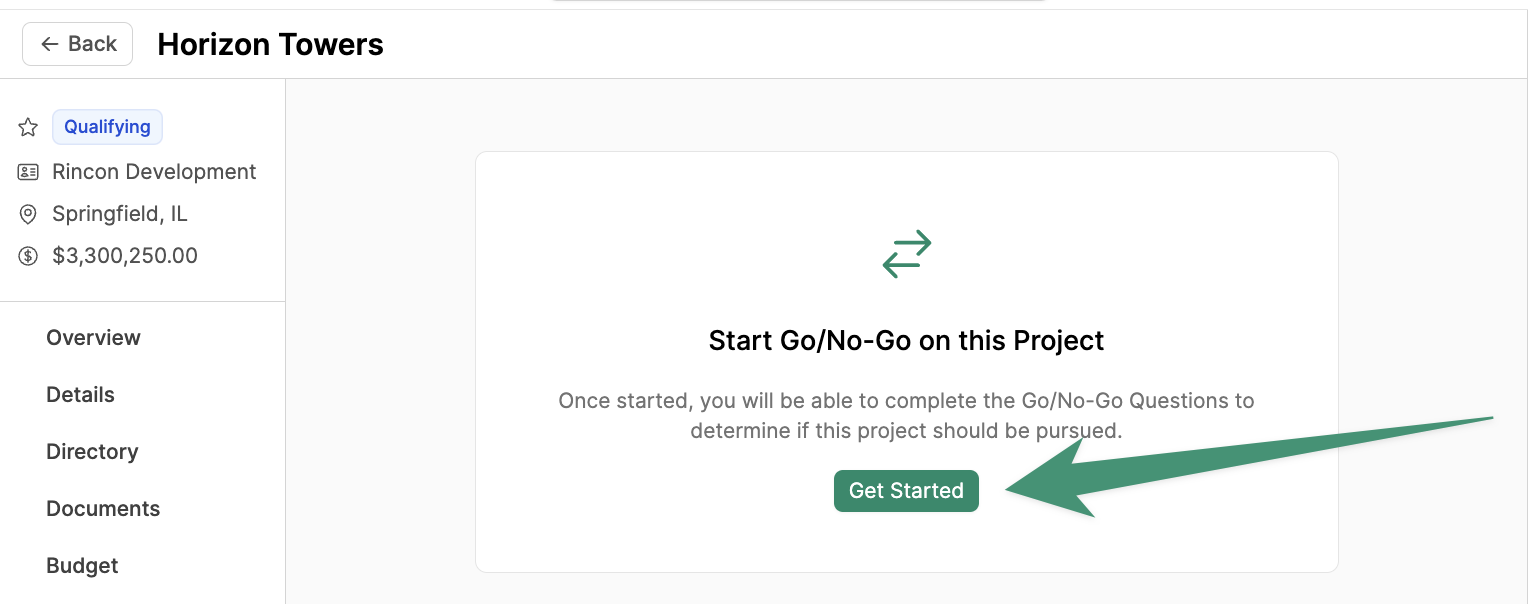
Complete the questionnaire. Once all questions have been answered, that project will receive a Go/No-Go score. Buildr recommends establishing Go/No-Go goals within your company before referencing the score given.
The following is an example of how to interpret a Go/No-Go number score:
- 80 (or above) - GO, no need for further discussion, try to win the job!
- 60 (or below) - NO GO, do not spend any more time or resources on this job.
- 60 to 80 - Leadership approval required, this job is not amazing, but might be worth
pursuing. Make a case for it to leadership!

The Go/No-Go score will be listed under Opportunity Information.
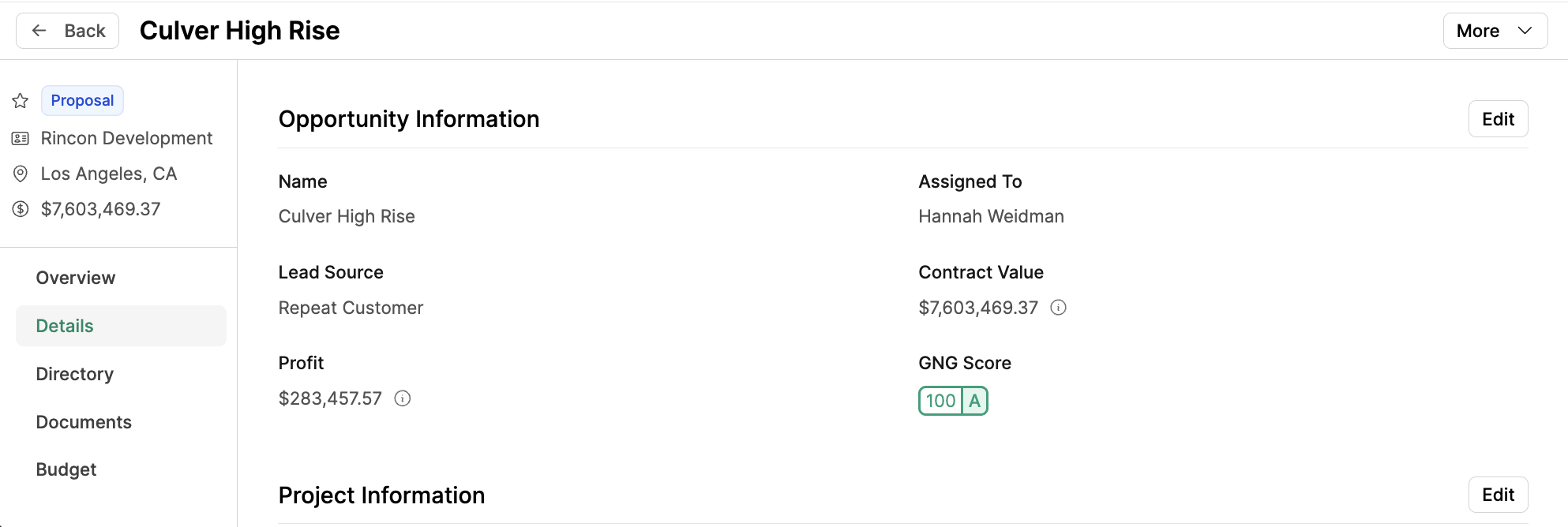
To view the Go/No-Go scores on your project list view, click "Board" at the top of the page (see below).
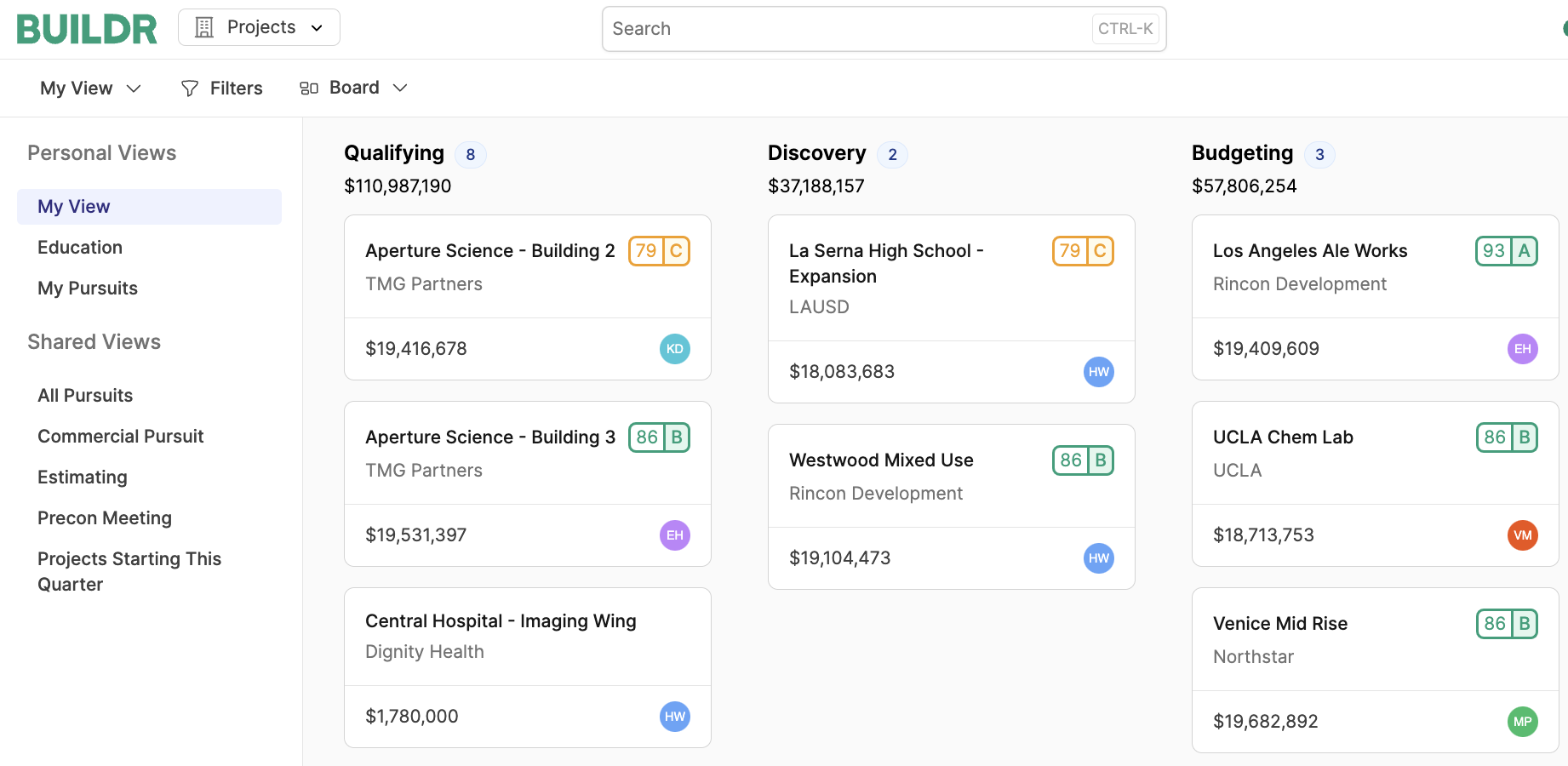
Updated about 2 months ago